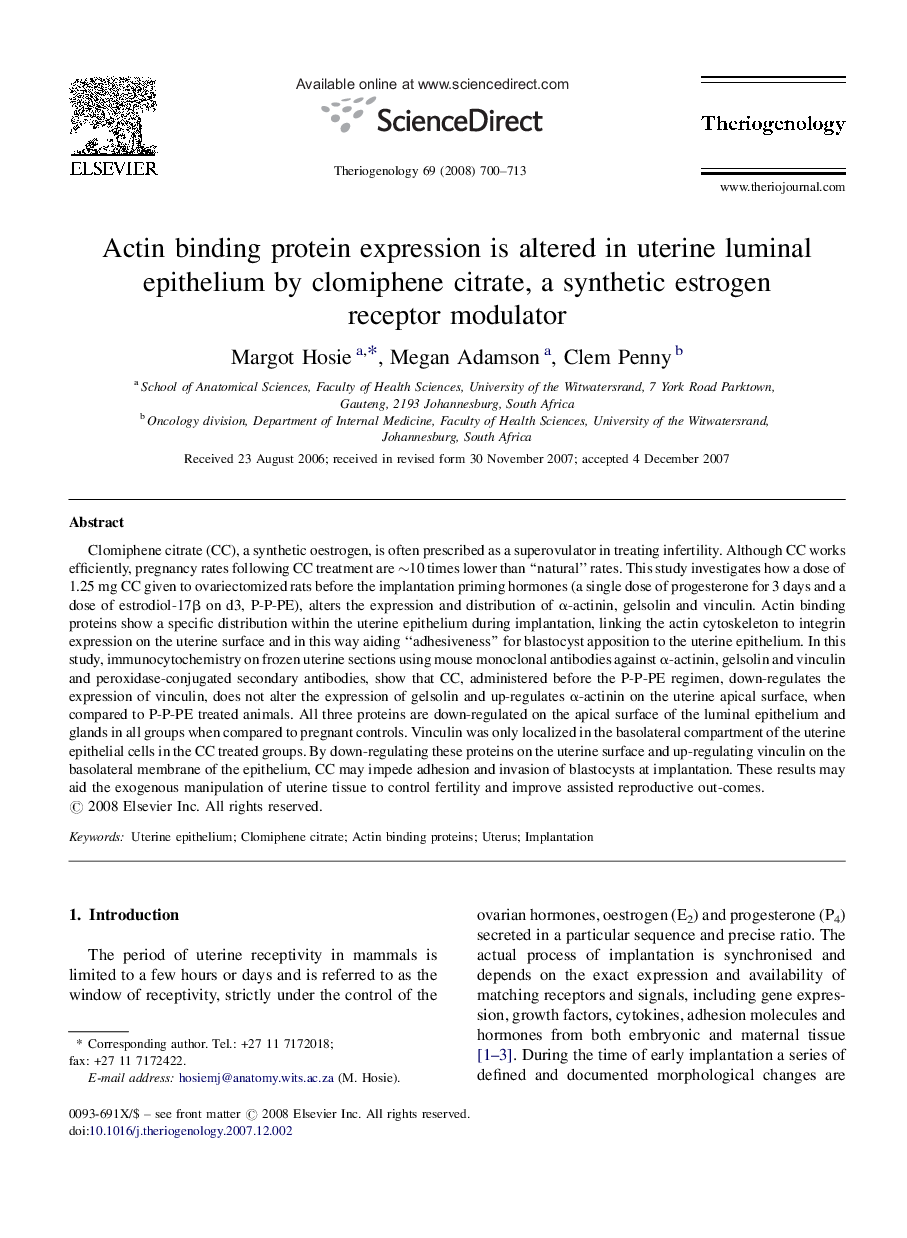| Article ID | Journal | Published Year | Pages | File Type |
|---|---|---|---|---|
| 2096111 | Theriogenology | 2008 | 14 Pages |
Clomiphene citrate (CC), a synthetic oestrogen, is often prescribed as a superovulator in treating infertility. Although CC works efficiently, pregnancy rates following CC treatment are ∼10 times lower than “natural” rates. This study investigates how a dose of 1.25 mg CC given to ovariectomized rats before the implantation priming hormones (a single dose of progesterone for 3 days and a dose of estrodiol-17β on d3, P-P-PE), alters the expression and distribution of α-actinin, gelsolin and vinculin. Actin binding proteins show a specific distribution within the uterine epithelium during implantation, linking the actin cytoskeleton to integrin expression on the uterine surface and in this way aiding “adhesiveness” for blastocyst apposition to the uterine epithelium. In this study, immunocytochemistry on frozen uterine sections using mouse monoclonal antibodies against α-actinin, gelsolin and vinculin and peroxidase-conjugated secondary antibodies, show that CC, administered before the P-P-PE regimen, down-regulates the expression of vinculin, does not alter the expression of gelsolin and up-regulates α-actinin on the uterine apical surface, when compared to P-P-PE treated animals. All three proteins are down-regulated on the apical surface of the luminal epithelium and glands in all groups when compared to pregnant controls. Vinculin was only localized in the basolateral compartment of the uterine epithelial cells in the CC treated groups. By down-regulating these proteins on the uterine surface and up-regulating vinculin on the basolateral membrane of the epithelium, CC may impede adhesion and invasion of blastocysts at implantation. These results may aid the exogenous manipulation of uterine tissue to control fertility and improve assisted reproductive out-comes.
